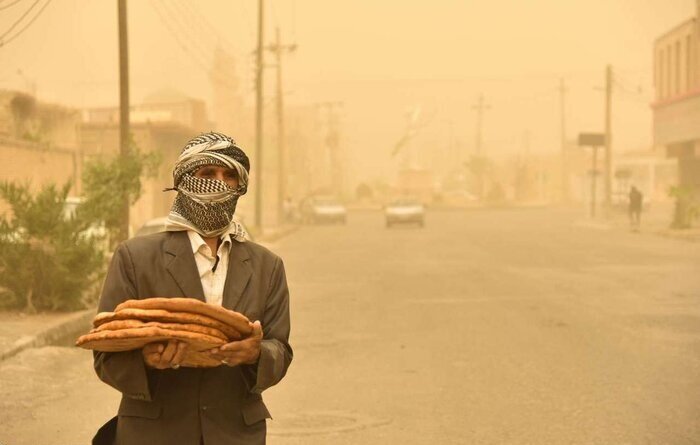10-year plan to contain internal SDS sources

TEHRAN – A 10-year plan has been prepared to mitigate internal hotspots giving rise to sand and dust storms (SDSs), Ali Salajeqeh, head of the Department of Environment (DOE), has announced.
Unfortunately, the desertification phenomenon is progressing in the country and is outpacing reforestation, he lamented.
The internal dust sources are estimated at 34.6 million hectares, generating an average amount of 4.22 million tons of dust per year.
Based on the 10-year plan, the relevant institutions are performing their tasks to curb SDS effects, he stated, adding that the Natural Resources and Watershed Management Organization should have the first role in the plan, and the Planning and Budget Organization should also stand by the work.
In July, Tehran played host to a conference of ministers and officials from 11 countries, aiming to boost cooperation for resolving extant environmental problems, especially sand and dust storms.
Environment ministers of Iraq, Armenia, the United Arab Emirates, Oman, Syria, and Qatar, as well as deputy ministers of Azerbaijan and Turkmenistan along with delegations from Turkey and Uzbekistan, participated in the event which was held with the theme of “Environmental Cooperation for a Better Future.”
SDS effects
The SDSs phenomenon has been plaguing the country for several years and has caused problems in many provinces. According to experts, natural and human factors are involved in the occurrence and severity of this phenomenon which is mainly caused by excessive consumption of water and drying up reservoirs.
The internal dust sources are estimated at 34.6 million hectares, generating an average amount of 4.22 million tons of dust per year, about 1.460 million hectares are dried wetlands.
Some 4.23 million tons of dust are raised per year, which means the loss of soil fertility will hit the agricultural sector.
All the SDSs sources are not located in Iran, 300 million hectares in the neighboring countries are giving rise to SDSs, which transport dust into Iran. The total dust density is estimated at about 150 million tons.
In fact, the dust is raised from Turkmenistan, Uzbekistan, Afghanistan, and Pakistan in the northeast as well as Iraq, Syria, Saudi Arabia, and Jordan in the south, southwest, and west.
Letizia Rossano, the director of the Asian and Pacific Centre for the Development of Disaster Information Management (APDIM), said in June that Iran is really at forefront of understanding the problem of sand and dust storms as well as dealing with it.
More than 80 percent of the entire populations of Turkmenistan, Pakistan, Uzbekistan, Tajikistan, and the Islamic Republic of Iran are exposed to medium and high levels of poor air quality due to sand and dust storms," she noted.
FB/MG
Leave a Comment